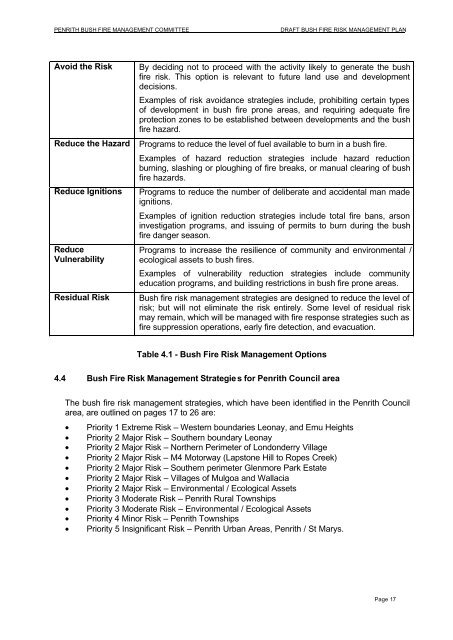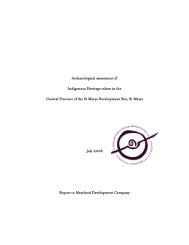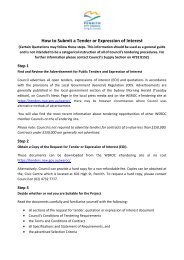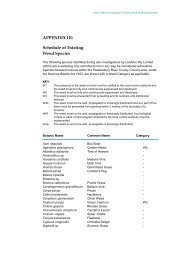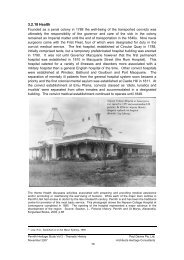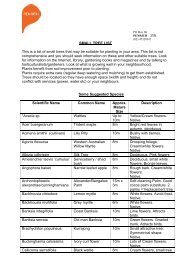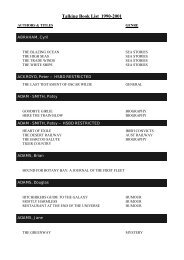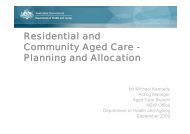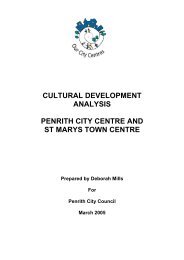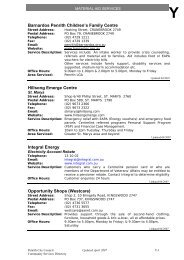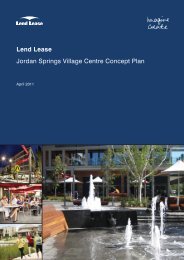Penrith Bush Fire Management Committee Bush Fire Risk ...
Penrith Bush Fire Management Committee Bush Fire Risk ...
Penrith Bush Fire Management Committee Bush Fire Risk ...
You also want an ePaper? Increase the reach of your titles
YUMPU automatically turns print PDFs into web optimized ePapers that Google loves.
PENRITH BUSH FIRE MANAGEMENT COMMITTEE DRAFT BUSH FIRE RISK MANAGEMENT PLAN<br />
Avoid the <strong>Risk</strong> By deciding not to proceed with the activity likely to generate the bush<br />
fire risk. This option is relevant to future land use and development<br />
decisions.<br />
Examples of risk avoidance strategies include, prohibiting certain types<br />
of development in bush fire prone areas, and requiring adequate fire<br />
protection zones to be established between developments and the bush<br />
fire hazard.<br />
Reduce the Hazard Programs to reduce the level of fuel available to burn in a bush fire.<br />
Examples of hazard reduction strategies include hazard reduction<br />
burning, slashing or ploughing of fire breaks, or manual clearing of bush<br />
fire hazards.<br />
Reduce Ignitions Programs to reduce the number of deliberate and accidental man made<br />
ignitions.<br />
Reduce<br />
Vulnerability<br />
Examples of ignition reduction strategies include total fire bans, arson<br />
investigation programs, and issuing of permits to burn during the bush<br />
fire danger season.<br />
Programs to increase the resilience of community and environmental /<br />
ecological assets to bush fires.<br />
Examples of vulnerability reduction strategies include community<br />
education programs, and building restrictions in bush fire prone areas.<br />
Residual <strong>Risk</strong> <strong>Bush</strong> fire risk management strategies are designed to reduce the level of<br />
risk; but will not eliminate the risk entirely. Some level of residual risk<br />
may remain, which will be managed with fire response strategies such as<br />
fire suppression operations, early fire detection, and evacuation.<br />
Table 4.1 - <strong>Bush</strong> <strong>Fire</strong> <strong>Risk</strong> <strong>Management</strong> Options<br />
4.4 <strong>Bush</strong> <strong>Fire</strong> <strong>Risk</strong> <strong>Management</strong> Strategies for <strong>Penrith</strong> Council area<br />
The bush fire risk management strategies, which have been identified in the <strong>Penrith</strong> Council<br />
area, are outlined on pages 17 to 26 are:<br />
• Priority 1 Extreme <strong>Risk</strong> – Western boundaries Leonay, and Emu Heights<br />
• Priority 2 Major <strong>Risk</strong> – Southern boundary Leonay<br />
• Priority 2 Major <strong>Risk</strong> – Northern Perimeter of Londonderry Village<br />
• Priority 2 Major <strong>Risk</strong> – M4 Motorway (Lapstone Hill to Ropes Creek)<br />
• Priority 2 Major <strong>Risk</strong> – Southern perimeter Glenmore Park Estate<br />
• Priority 2 Major <strong>Risk</strong> – Villages of Mulgoa and Wallacia<br />
• Priority 2 Major <strong>Risk</strong> – Environmental / Ecological Assets<br />
• Priority 3 Moderate <strong>Risk</strong> – <strong>Penrith</strong> Rural Townships<br />
• Priority 3 Moderate <strong>Risk</strong> – Environmental / Ecological Assets<br />
• Priority 4 Minor <strong>Risk</strong> – <strong>Penrith</strong> Townships<br />
• Priority 5 Insignificant <strong>Risk</strong> – <strong>Penrith</strong> Urban Areas, <strong>Penrith</strong> / St Marys.<br />
Page 17


